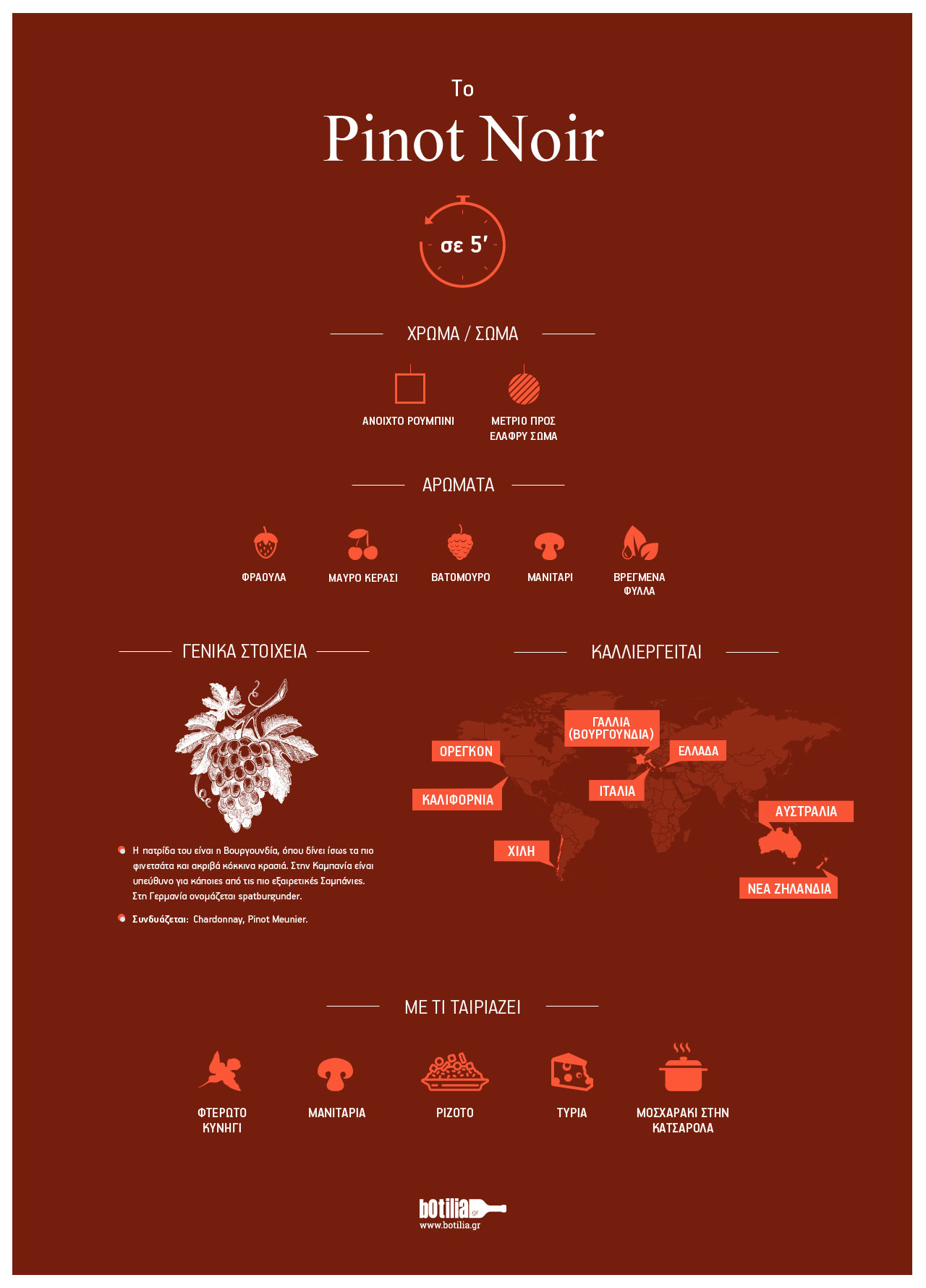PINOT NOIR IN 5'!

General info
Pinot Noir is one of the finest and demanding varieties. It loves the cool climates because it keeps its finesse and freshness, while in warm climates it aquires a lot of jammy aromas and becomes flabby. Its origins are from Burgundy where it gives wines of unique finesse and aging potential. New World Wines have slightly fuller body and deeper color, and are much more fruity. In Germany, Spatburgunder is very popular where the climate helps it a lot and gives light red wines with crisp acidity. In Champagne it participates in the homonymous sparkling wines either alone or in blend with Chardonnay or Pinot Meunier (blanc de noirs). Also a Pinot's crossing with Cinsault, gives a variety that thrives in Africa, Pinotage.
Characteristics
In Burgundy, Pinot Noir gives wines with light ruby color, medium tannins and medium (+) acidity. They have aromas of red fruits such as strawberry, cherry and raspberry but also earthly notes like mushroom, tea and wet leaves. They have good aging potential, from 2 to 15 years, depending on vinification style, and with aging they aquire more intense earthy aromas (truffle, forest floor) and silky texture. Usually they mature in oak barrel and get spicy notes of vanilla and nutmeg. The oak barrel also helps with the structure and the aging potential.
New World Pinot Noir (Australia, USA, New Zealand, Africa) have a slightly fuller body and deeper color, riper red and black fruit such as cherry and sour cherry and botanical hints.
Combination with food
A Pinot Noir from Burgundy loves gamey meats, a slow cooked beef (Bourguignon) and French cheeses like Camembert. If it is a bit older, it goes perfectly with mushroom dishes such as risotto, Wellington beef and papardelle with truffle sauce.
The juicier Pinot of the New World accompanies lamb with rosemary, beef fillet with red wine sauce and fish such as tuna tataki. Champagne loves fatty and salty cheeses such as Parmesan and shells like oysters.
Eva Markaki
Wine Geek


